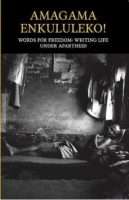Nat Nakasa’s own life story shows the effects of Apartheid on people trying to live a normal life and the very difficult choices it forced them to make. He was born in 1937 in Durban. He moved to Johannesburg and worked as a journalist, writing for Drum and the Rand Daily Mail (he was the first black journalist on their staff). He also started and edited The Classic, a magazine for black writers. In 1964 he was awarded a scholarship to study journalism at Harvard University in the USA. A lot of Apartheid was about the government controlling black South Africans’ movements, and so it was very difficult for them to travel overseas. As an intellectual and a critic of Apartheid, Nakasa was denied a passport. The only way he could leave the country was on an exit permit, which meant he was never allowed to come back. Knowing that he was about to be banned by the government, he chose to leave behind everything he knew, and travel to America. However, the thought that he could never return home upset him greatly, and in 1965 he jumped to his death from the window of a tall building in New York, USA.
The two pieces of writing here show the absurd and destructive limits that Apartheid placed on black lives. In the first, Nakasa talks about the kind of jobs that black people were expected to have – as ‘houseboys’ and miners – and how difficult his life was when he tried to be something else. In the second, he visits Pretoria and experiences things like ‘whites-only’ benches and buildings, and talks to a supporter of the Apartheid Government.
As you read, be on the lookout for Nakasa’s use of irony and sarcasm. The stories that follow are full of points where he says one thing but means the opposite. For example, he explains how a mining boss ‘convinced [him] that Africans on the mine were a happy lot’. Reading deeply and carefully will help you notice these points. Think about why Nakasa might have used all this irony instead of writing more simply.


